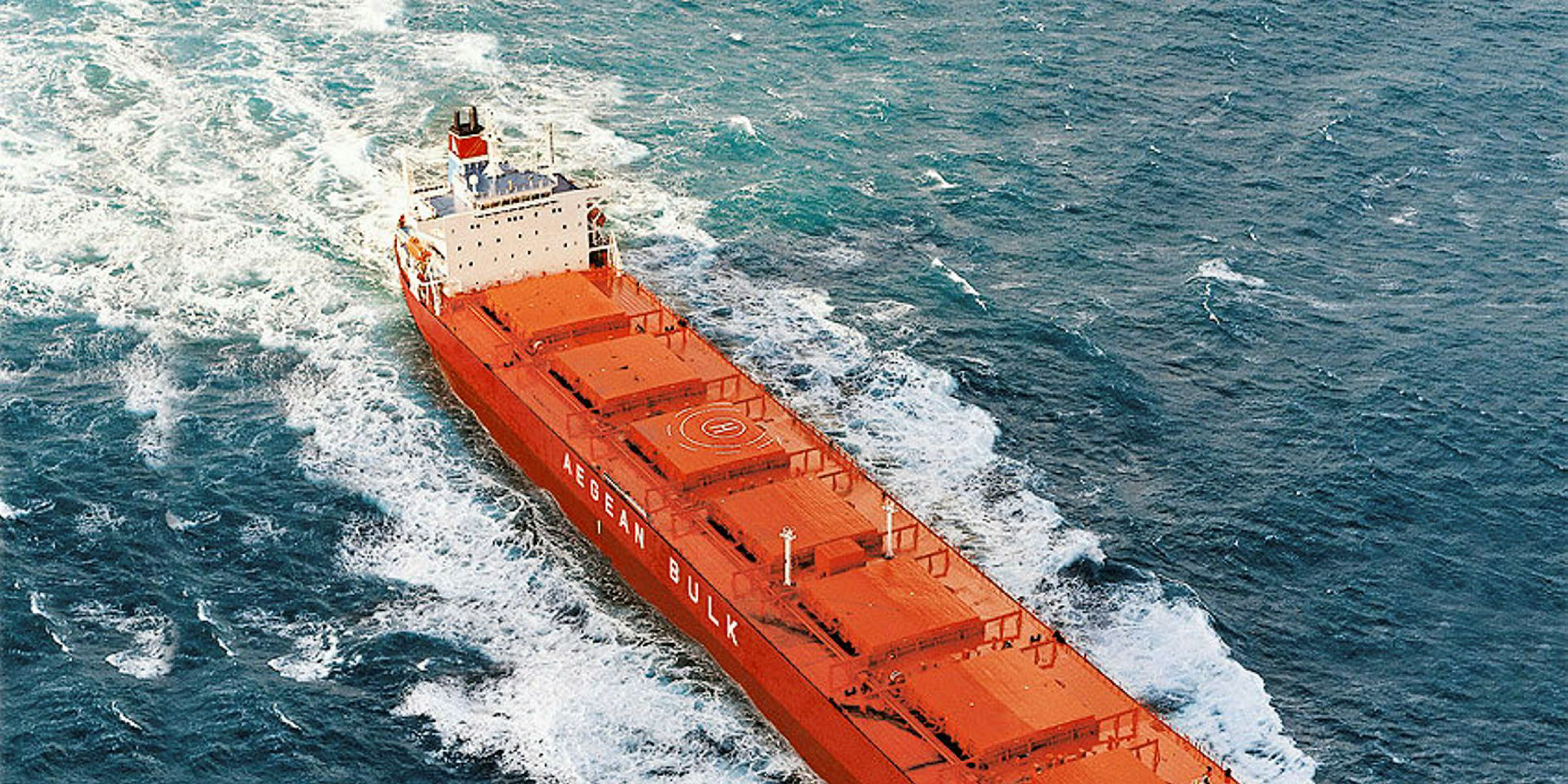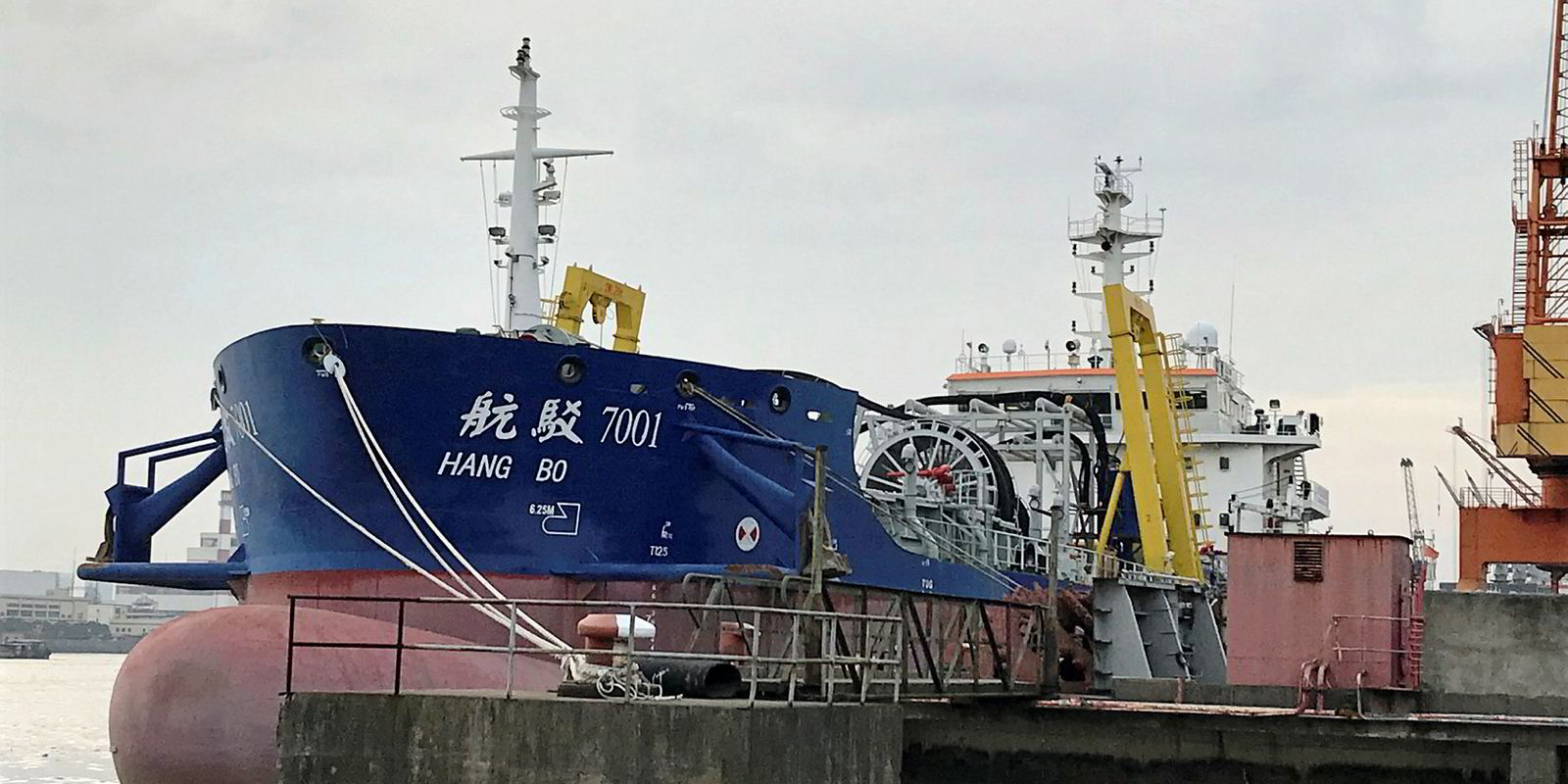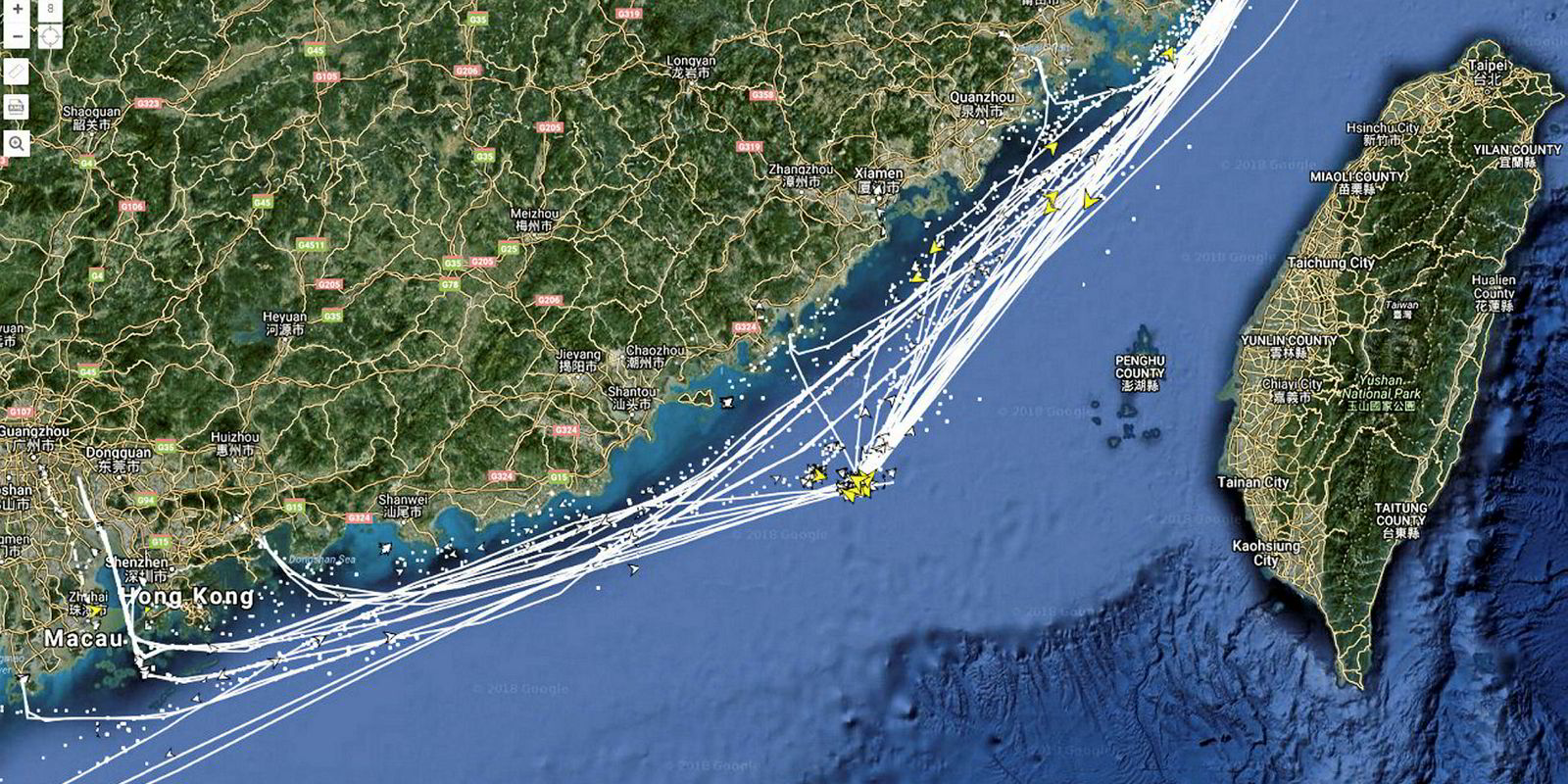Automatic identification system location and draught data for the last 12 months shows that beginning immediately after the Chinese New Year holidays an increasing volume of ships from handysize to post-panamax has begun calling in an area of the Taiwan Bank about 80 kilometres east-southeast of Shantou.
The data, surveyed through the VesselsValue shipping data platform and other sources, shows that the ships arrive in ballast and anchor well outside the main coastal shipping lane in the area where the Taiwan Strait opens into the South China Sea.
The majority of the vessels are panamax bulkers of 1999 to 2001 vintage, almost all purchased within the last two years for import into the Chinese flag by parties listed in broking reports as "unknown Chinese buyer". Many supramaxes and some handies also work the sand trade.
TradeWinds has documented some 63 such calls since Chinese New Year, but this is in no way a complete count and includes only ships classed by China Classification Society, not the purely domestic PRC Register of Shipping.
Panamaxes arrive at the anchorage from the south, after delivering North China coal to Dongguan or other southern ports. Supramaxes, however, often arrive from the north and ballast back immediately for a second load, rather than stopping there for a backhaul cargo.
After 48 hours or more at anchor, the ships proceed laden to discharge ports both along the coast as far north as Lianyungang and also inland as far up the Yangtze River as Yangzhou.
At some of the coastal discharge sites, the sand is being delivered directly to reclamation projects such as the port expansion at Lianyungang, but many of the upriver destinations are said to be new sea sand desalination yards.
The expense of that process has become more economically viable as China improves enforcement of its longstanding ban on river, beach and near-coastal sand mining, choking off the supply of freshwater sand available for China's construction industry.
Sand is a backhaul cargo in the Chinese domestic coastal trade, supplementing the massive north-to-south coal trade. However, freight rates for the subset of owners willing to carry sea sand are understood to have surpassed those for coal at times this year.






